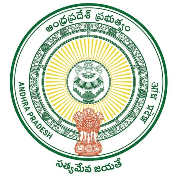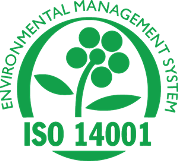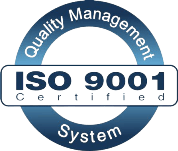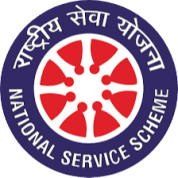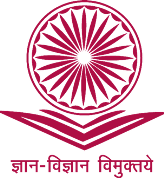Qualification
Ph.D. (1996) – Department of Physics, Sri Krishnadevaraya University, Anantapur, India.
PDF/Teaching Experience
• Professor of Physics, Yogi Vemana University, Kadapa: Oct 2015 – Till date.
• Associate Professor in Physics, Yogi Vemana University, Kadapa: Oct 2009 – Oct 2015.
• Scientist-C, National Physical Laboratory, New Delhi: Aug 2004 – Oct 2009.
• Research Scientist, Sri Krishnadevaraya University, Anantapur: May 1998 – Aug 2004.
• Senior Research Fellow, Sri Krishnadevaraya University, Anantapur: July 1996 – May 1998.
Administrative Experience
• Worked as Head, Department of Physics from December, 2010 – February, 2013 (2 Y 2M).
• Worked as Convener, Board of Studies in Physics from November, 2011 – February, 2013 (1Y 3M).
• Worked as Convener, National Events Implementation Committee from June, 2010 – May, 2013 (3Y).
• Worked as a member, Central Purchase Committee of Yogi Vemana University for 3 Years.
• Worked as a Registrar, Yogi Vemana University, Kadapa from 11th September, 2015 – 19th April, 2017 (1 Y 7M).
• Worked as Chairman, Board of Studies in Physics from 17.06.2017 to 16.06.2020 (3Y).
• Worked as Advisor for Controller of Examinations, Yogi Vemana University, Kadapa from 12.12.2017 to 31.12.2020 (3Y).
• Worked as Dean, College Development Council, Yogi Vemana University, Kadapa from 30.01.2018 to 10.07.2020 (2Y 6M).
• Worked as a member in Yogi Vemana University Research Advisory Council from February, 2018 to June, 2020 (2Y 4M).
• Working as Professor-in-charge of IT & Network Cell of Yogi Vemana University, Kadapa since September, 2019.
• Working as a member in Council of Yogi Vemana University Developmental Activities since January, 2020.
• Working as Advisor to Internal Quality Assurance Cell (IQAC), Yogi Vemana University, Kadapa since July, 2020.
Research Projects
Ongoing
• Radiative forcing due to regional atmospheric aerosols at Kadapa, Andhra Pradesh (ARFI Network station). Sponsored by ISRO, Bangalore since 2010-ongoing as a PI - Project Outlay: Rs.120.00 Lakhs till the FY 2020-21.
Completed
• Study of Oceanographic Processes of North Indian Ocean in reference to global change. Sponsored by CSIR Network in 2003-2008 as a Member – Project Outlay: Rs.140.0 Lakhs.
• Estimates of Indoor Air pollutants emitted from Fuels used in residential sector of northern India. Sponsored by CSIR-External in 2006-2009 as a Co-PI - Project Outlay: Rs.18.12 Lakhs.
• Study on the effects of Atmospheric dynamical activity (Long and short term) in the tropical tropopause region: Implication on the stratosphere-Troposphere exchange of the minor constituents. Sponsored by ISRO, Bangalore in 2006-2009 as a Co-PI - Project Outlay: Rs.21.15 Lakhs.
• Snow-pack production of Carbon monoxide and its diurnal variability. Sponsored by NCAOR (Mo ES), Goa in 2007-2010 as a Co-PI - Project Outlay: Rs.30.0 Lakhs.
Research Students
Ph.D Awarded
• Mr. I. Kishore Kumar Reddy | Radiative forcing due to regional atmospheric aerosols & clouds | February, 2016.
• Ms. G. Reshma Begam | Studies on regional atmospheric aerosols and their effects | October, 2016.
• Mr. C. Viswanatha Vachaspati | Studies on semi-arid regional atmospheric aerosols over Kadapa, India and their role in Direct Radiative Forcing | March, 2019.
Ph.D Pursuing
• Mr. P. Shankar Narayana | Studies on morphological and chemical properties of atmospheric aerosols and their radiative impacts.
• Mr. A. Ramanjula Reddy | Long-term studies on regional atmospheric aerosols using ground and satellite based measurements.
• Mr. Syed Masood Ahammad | Atmospheric aerosols over semi-arid region and their impact on solar radiation.
Achievements / Awards : 08
• Member of ORV Sagar Kanya Cruise (SK-193) as a part of ARMEX Programme.
• Member of National level Land Campaign under ISRO–Geosphere Biosphere Programme.
• Member of ORV Sagar Kanya Cruise (SK-212) as a part of CSIR Network Programme.
• Member of ISRO-GBP Special Aerosol Land Campaign.
• Member of Biomass burning experiment at Arunachal Pradesh under CSIR Programme.
• Member of ORV Sagar Kanya Cruise (SK223) under ISRO-GBP:ICARB Programme.
• Member of “First Winter Phase Indian Arctic Expedition” at Ny-Alesund, Arctic.
• Member of “Second Phase Summer Indian Arctic Expedition” at Ny-Alesund, Arctic.
Research Publications in National & International SCI Journals : 106
Google Scholar Citations: Visit here
Number of Book Chapters (National / International) : Nil
Number of Books Published (National / International) : Nil
Number of Conference / Symposia Organized : 02
Number of Conference / Symposia Attended : 52
Membership in Prestigious Academic Bodies
• Life member of Indian Aerosol Science and Technology Association, India.
Reviewed Research Papers of Various Scientific Journals
Atmospheric Environment, Atmospheric Research, Journal of Geophysical Research, Geophysical Research Letters, Journal of Asian Earth Sciences, International Journal of Remote Sensing, Chemosphere, Environment Science and Pollution Research.
Ph.D. Thesis Adjudication
Number of Ph.D thesis submitted to various universities like Sri Krishnadevaraya University, Anantapur, Sri Venkateswara University, Tirupati, Andhra University, Visakhapatnam, Rayalaseema University, Kurnool, Jawaharlal Nehru Technological University, Anantapur and Indra Prastha University, New Delhi etc were adjudicated.
 Vemanapuram, Kadapa, Y.S.R Kadapa-516005, A.P., India
Vemanapuram, Kadapa, Y.S.R Kadapa-516005, A.P., India itcell@yvu.edu.in
itcell@yvu.edu.in







